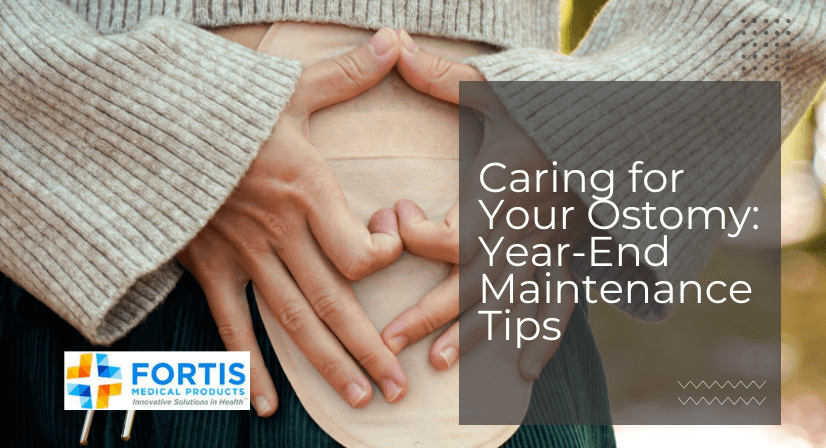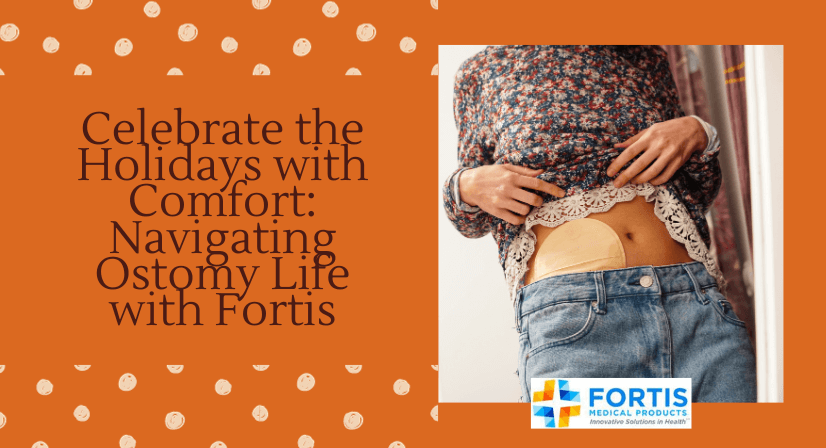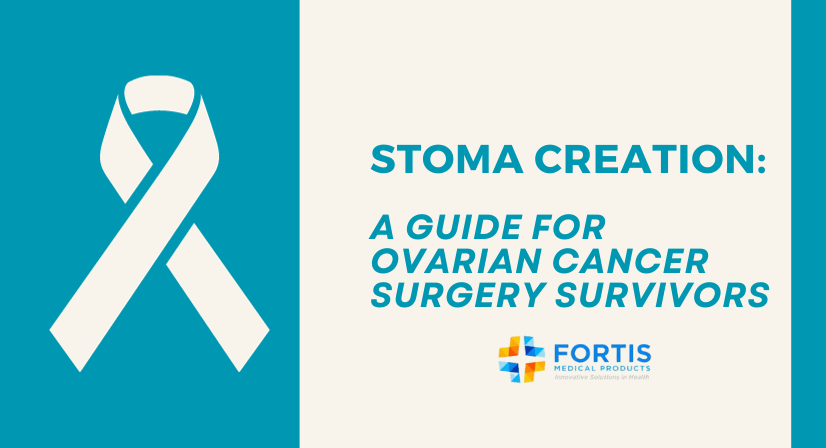Shop Entrust Ostomy Products
Shop Entrust Accessories
Our Blog
How much do you know about colorectal cancer?
It’s an important topic for us because many of our clients with an ostomy condition (in this case, “colostomy”) have been through this diagnosis. While it’s not as deadly as other forms of cancer, provided you catch it on time, it’s still a very serious illness. We’d like to share a synopsis of CRC, along with its relationship with the colostomy procedure.
What is Colorectal Cancer?
CRC occurs when cancerous tumors develop around the rectum and/or colon. This is where healthy cells mutate into cancer, which can become life-threatening if left unchecked. This type of cancer has the potential to spread and overwhelm part or all of the rectum and colon, leading the patient to need surgery and other therapies.
Fortunately, there are ways to overcome CRC, thanks to modern medicine.
Risk Factors & Symptoms for Colorectal Cancer
What are some of the common risk factors for CRC?
- Obesity
- Sedentary Lifestyle
- Family History
- Diet Heavy in Processed Meats or Red Meat (Pork)
- Over-use of Alcohol and Tobacco
- Type-II Diabetes Diagnosis
- Colorectal Polyps
- Age of 50+
- Irritable Bowel Syndrome (IBS)
It’s also important to know the most typical symptoms for CRC. Those include bloody stool, sudden and unexplained weight loss, abdominal cramps, and constipation. You should contact your personal care provider or physician if you experience these symptoms for any considerable length of time.
How Do Physicians Treat Colorectal Cancer?
The treatment options for CRC most often include Radiation Therapy, Surgery, and/or Chemotherapy.
Your provider will choose the best approach after considering the cancer’s location and severity, especially regarding its likelihood of spreading. The toughest CRC cases may need chemo or radiation to eliminate the problem.
Surgery & Colostomy
Surgery involves removing all tumorous growths, something that may lead a patient to require a colostomy. If surgery removes parts of the colon or bowel, the colostomy procedure will redirect the large intestine to an opening created in the lower abdomen. Through this new “stoma,” patients will have a new pathway for passing stool, since they can no longer use their colon/rectum (either on a temporary or permanent basis).
Choose Fortis Medical Products for Optimal Colostomy Care
If you’ve recently undergone a colostomy (or any other ostomy), then proper stoma care is essential for healthy living. Your doctors, nurses, and other healthcare providers will show you how to select, equip, and utilize effective ostomy pouches, bags, and other tools as you make this adjustment.
For the most effective ostomy pouches and accessories, please consider the proven resources from Fortis Medical Products. You can learn why we offer the best ostomy care solutions, including ones for colorectal cancer patients, by contacting us anytime at 855-550-2600.
Having a stoma shouldn’t hold you back from achieving your career goals. While transitioning to life with an ostomy may come with adjustments, feeling comfortable and confident at work is absolutely possible. Here at Fortis Medical Products, we want to empower you with some practical tips:
Embrace the Power of Preparation
Pack an emergency kit: Keep a discreet pouch filled with essential supplies like extra ostomy pouches, adhesive remover wipes, and a change of clothes. This provides peace of mind and allows you to handle unexpected changes with ease.
Identify a designated space: Ask your employer about accessible and private bathroom facilities where you can comfortably manage your ostomy care. Knowing you have a dedicated space can significantly reduce stress.
Dress for Success and Comfort
Comfort first: Ditch the tight-fitting clothes and opt for loose-fitting garments that won’t irritate your stoma or restrict movement. Consider high-waisted pants or skirts if you find the pouch noticeable under your clothing.
Explore specialized options: Companies offer clothing specifically designed for ostomates, featuring hidden compartments to discreetly hold your pouch and providing additional support.
Embrace Open Communication (Optional)
Know your rights: The Americans with Disabilities Act (ADA) protects your right to reasonable accommodations in the workplace. If you require a flexible schedule for bathroom breaks or a private space for ostomy care, you can discreetly discuss your needs with your employer.
Building trust: If you feel comfortable doing so, consider informing a trusted colleague or manager about your ostomy. This can foster understanding and create a supportive work environment.
Most importantly, remember:
You are not alone: Millions of people worldwide lead fulfilling lives with ostomies. There are online communities and support groups where you can connect with others and share experiences.
Focus on your strengths: Don’t let your stoma define you. Your dedication, skills, and work ethic are what truly matter in your career.
By incorporating these tips and embracing a positive attitude, you can confidently navigate your professional life with your stoma and achieve your full potential. For further guidance and product recommendations, remember, Fortis Medical Products is always here to support you on your journey.
World Cancer Day, observed on February 4th, is a time to unite against cancer, raise awareness, and encourage prevention, detection, and treatment. In the spirit of this global initiative, Fortis Medical Products, a leading provider of ostomy products and accessories, stands strong in the fight against cancer. This year, we shine a spotlight on colorectal cancer, a disease that impacts millions worldwide.
Colorectal cancer, affecting the colon or rectum, is a significant health concern. As we acknowledge World Cancer Day, it is crucial to emphasize the importance of early detection and support for those battling colorectal cancer. Fortis Medical Products plays a vital role in this mission, providing innovative ostomy solutions that enhance the quality of life for individuals living with colorectal cancer.
Ostomy products, such as colostomy bags and accessories, are indispensable for many colorectal cancer patients who have undergone ostomy surgery. Fortis Medical Products takes pride in offering a wide range of high-quality, discreet, and comfortable ostomy solutions that empower individuals to lead fulfilling lives despite their health challenges.
On World Cancer Day, Fortis Medical Products reaffirms its commitment to supporting the colorectal cancer community. Through our products and services, we aim to contribute to the well-being of those affected by this form of cancer. Our team understands the unique needs of colorectal cancer patients and strives to provide compassionate care through reliable and cutting-edge ostomy solutions.
As part of our dedication to the cause, Fortis Medical Products encourages everyone to stay informed about colorectal cancer, its symptoms, and preventive measures. Regular screenings and early detection significantly increase the chances of successful treatment. By fostering awareness and understanding, we can collectively make a difference in the lives of colorectal cancer patients.
This World Cancer Day, let us join hands to support each other, raise awareness, and inspire hope. Fortis Medical Products remains steadfast in our mission to improve the lives of individuals affected by colorectal cancer, offering not just products but a source of strength and comfort on their journey towards healing. Together, we can make a meaningful impact in the fight against cancer. To learn more about us, give our team a call at 855-550-2600 or fill out the form on this page!
Living with an ostomy can be a challenging journey, requiring individuals to adapt to significant changes in their daily routines. As we continue to explore ways to enhance the quality of life for those with ostomies, one crucial aspect that often gets overlooked is nutrition. Fortis Medical Products understands the importance of comprehensive ostomy care, and today, we delve into the vital role that nutrition plays in supporting individuals with ostomies.
Maintaining a balanced and nourishing diet is essential for overall well-being, and this holds true for individuals living with an ostomy. Proper nutrition not only promotes healing but also helps prevent complications and supports the body’s resilience.
Recent studies have shed light on the impact of specific dietary choices on ostomy care. Research suggests that a diet rich in fiber can contribute to better bowel regularity, potentially reducing the risk of complications such as blockages. Fortis Medical Products recommends incorporating a variety of fiber sources, such as fruits, vegetables, and whole grains, into the diet, ensuring a mix of soluble and insoluble fibers for optimal digestive health.
Furthermore, adequate hydration is paramount for individuals with ostomies. Staying well-hydrated not only supports digestion but also helps prevent dehydration, a common concern for those with ileostomies or colostomies. Fortis encourages individuals to monitor their fluid intake closely and consult with healthcare professionals to determine personalized hydration needs.
In addition to traditional dietary recommendations, emerging studies highlight the potential benefits of probiotics for ostomy patients. Probiotics, found in certain foods and supplements, may help maintain a healthy gut flora, promoting digestive health and potentially reducing the risk of pouchitis.
Fortis Medical Products remains committed to providing comprehensive ostomy care, including staying abreast of the latest research and dietary recommendations. By understanding the pivotal role of nutrition in ostomy care, individuals can take proactive steps to enhance their well-being and embrace life with confidence. We all carry an extensive line of ostomy products online.
In conclusion, a well-balanced and thoughtful approach to nutrition is fundamental for individuals navigating life with an ostomy. Fortis Medical Products encourages individuals to consult with healthcare professionals to create personalized dietary plans that cater to their unique needs, promoting a healthy and fulfilling lifestyle. For more information about Fortis, feel free to give our team a call at 855-550-2600.
As we approach the dawn of a new year, it’s a perfect time to reflect on the past and set intentions for the future. For individuals living with ostomies, the start of a new year presents a unique opportunity to focus on health, well-being, and positive lifestyle changes. At Fortis Medical Products, we understand the importance of supporting those with ostomies in their journey toward a healthier and more fulfilling life. Here are some ostomy-friendly resolutions to consider for the upcoming year:
Prioritize Self-Care
Make self-care a top priority in 2024. This includes regular check-ups with healthcare professionals, maintaining a proper skincare routine, and practicing mindfulness. Taking care of your mental and physical health is crucial for a positive and confident outlook.
Embrace Physical Activity
Explore physical activities that suit your lifestyle and comfort level. Whether it’s gentle yoga, swimming, or walking, staying active contributes to overall well-being. Consult your healthcare provider for guidance on exercises that are suitable for your specific condition.
Stay Hydrated and Nourished
Ensure that you’re providing your body with the nutrients it needs. Focus on a well-balanced diet rich in fruits, vegetables, and whole grains. Stay hydrated to support digestion and maintain overall health.
Connect with Support Groups
Consider joining support groups or online communities for individuals with ostomies. Connecting with others who share similar experiences can provide a sense of community, encouragement, and valuable insights into managing life with an ostomy.
Set Realistic Goals
Set achievable goals that align with your personal aspirations. Whether it’s returning to a favorite hobby or taking on a new challenge, breaking down larger goals into smaller, manageable steps can make the journey more attainable.
Educate and Advocate
Take the opportunity to educate those around you about ostomies and advocate for awareness. Sharing your story can help break down stigmas and foster understanding, ultimately creating a more inclusive and supportive environment.
Explore Ostomy-Friendly Products
Stay updated on the latest innovations in ostomy care. Fortis Medical Products is committed to providing cutting-edge solutions designed to enhance comfort and convenience for individuals with ostomies. Explore our range of ostomy-friendly products to discover options that suit your unique needs. If you have any questions, please give our a team a call at 855-550-2600.
As we welcome the new year, let it be a time of empowerment, growth, and positive change. With the right mindset and support, individuals with ostomies can embrace 2024 as a year of renewed vitality and well-being. Cheers to a healthier, happier you!
As the year comes to a close, individuals with ostomies must ensure that their medical supplies and equipment are in optimal condition. Fortis Medical Products, a trusted name in the healthcare industry, offers top-notch ostomy care solutions to make the process seamless. Let’s delve into a comprehensive year-end maintenance routine to ensure your ostomy stays healthy and trouble-free.
Equipment Checks
- Inspect your ostomy pouching system for any signs of wear, leaks, or damage.
- Ensure the skin barrier or wafer is securely adhered to your skin, providing a proper seal.
- Examine the ostomy bag closure mechanism to ensure it functions smoothly.
- Check the ostomy belt for elasticity and adjustability.
Supplies Inventory
- Take stock of your ostomy supplies, including pouches, skin barriers, adhesive removers, and wipes.
- Dispose of any expired products and replace them with fresh supplies.
- Consider ordering extra supplies to cover unexpected needs or potential delays in delivery.
Healthcare Appointments
- Schedule a year-end checkup with your healthcare provider or ostomy nurse for a comprehensive evaluation.
- Discuss any concerns or changes in your health that may impact your ostomy care.
- Receive guidance on adjusting your ostomy equipment, if necessary, to accommodate changes in your body shape or lifestyle.
Skin Health
- Assess the condition of the skin around your stoma for signs of irritation, redness, or infection.
- Cleanse the peristomal skin with a mild, non-alcoholic cleanser to maintain a healthy environment.
- Apply skin barrier products to protect against irritation and promote healing if needed.
Emergency Preparedness
Create an emergency kit containing essential ostomy supplies in case of unexpected situations, such as natural disasters or travel disruptions.
Keep a list of emergency contacts, including your healthcare provider and supplier, readily available
By incorporating these year-end maintenance tips into your ostomy care routine, you can enhance the longevity and effectiveness of your Fortis Medical Products. Prioritizing regular equipment checks, maintaining a well-stocked inventory, and staying proactive with healthcare appointments will ensure that your ostomy journey remains as smooth and comfortable as possible. Trust in Fortis Medical Products for reliable solutions, and embrace the upcoming year with confidence in your ostomy care. For more information, please give our a team a call at 855-550-2600.















